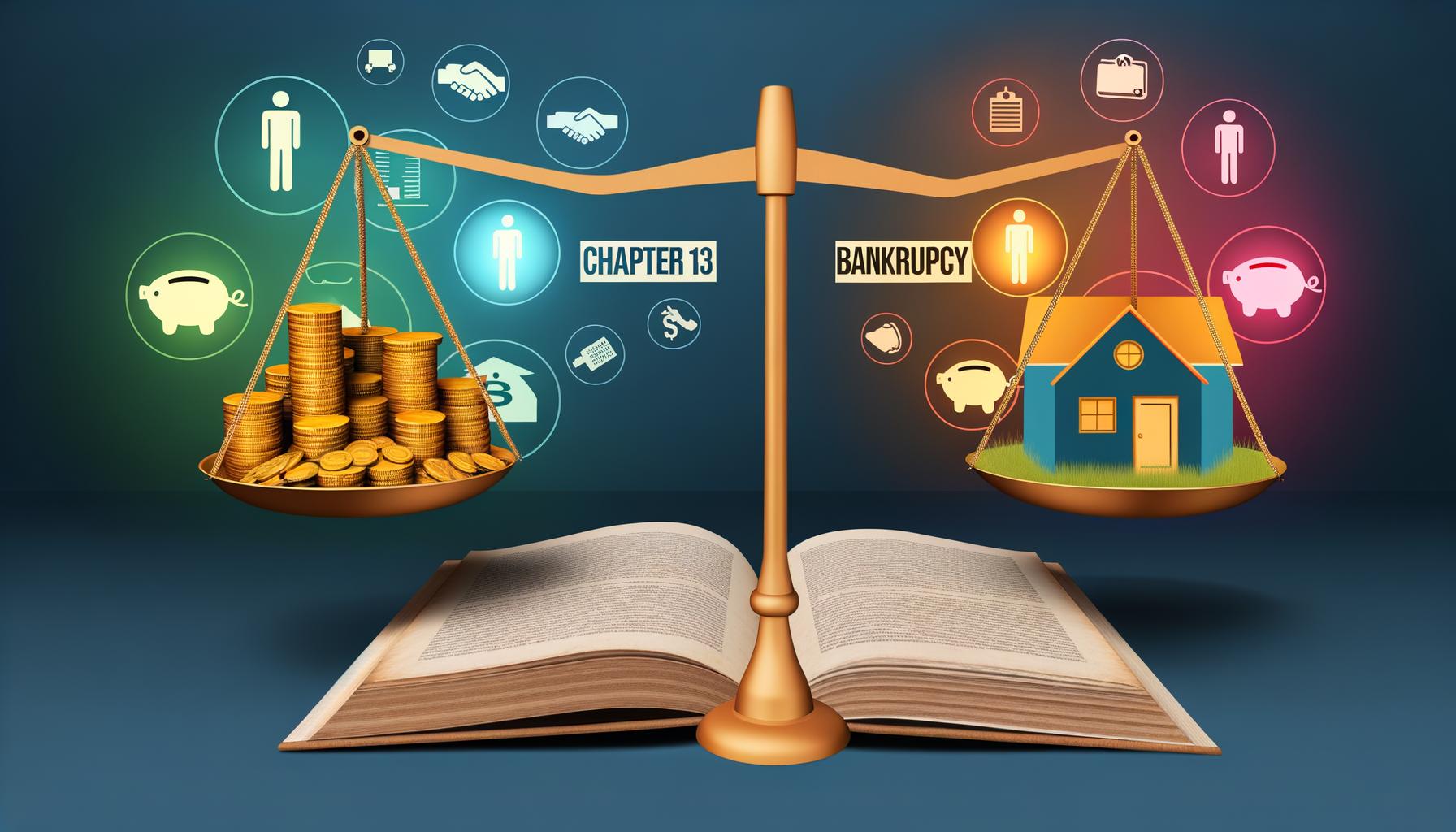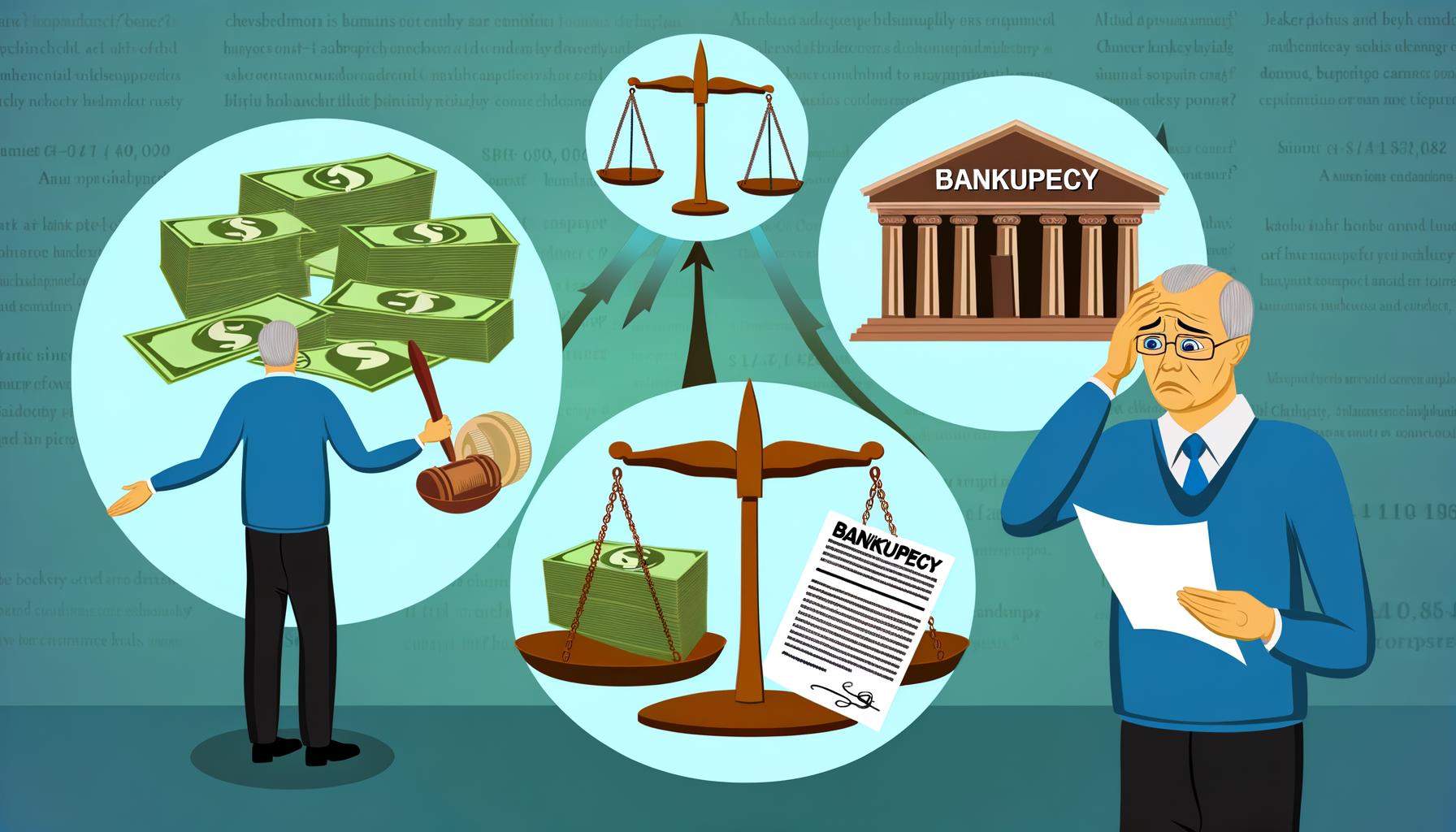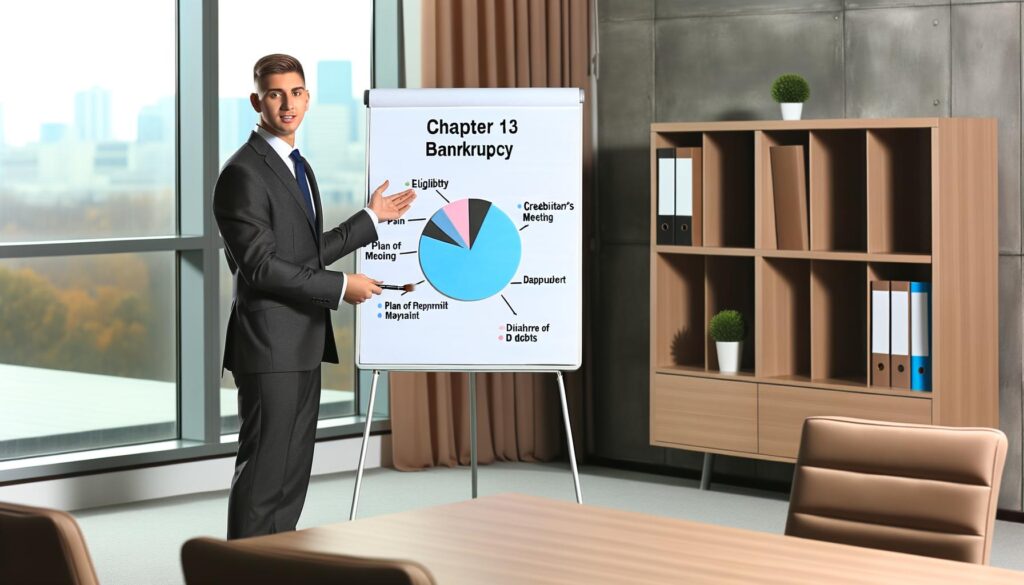Chapter 13 bankruptcy is a vital financial tool designed to offer relief for individuals struggling with overwhelming debt, providing them with an opportunity to reorganize their obligations under the protection of the court. For self-employed professionals in Placentia, navigating these turbulent economic waters can be particularly challenging due to the inherent inconsistencies and unpredictabilities of income streams common in self-employment.
This specialized form of bankruptcy not only helps manage debts but also allows small business owners to retain control over their operations while working towards financial stability.
The significance of Chapter 13 bankruptcy for self-employed professionals in Placentia cannot be overstated. Given the unique financial landscape and local economic factors, many entrepreneurs face hurdles that salaried employees may not encounter. From fluctuating monthly revenues to unexpected expenses associated with running a business, these complexities necessitate a tailored approach that Chapter 13 offers through structured repayment plans and creditor protection measures specific to the individual’s financial capabilities.
Placentia’s local economy presents its own set of opportunities and challenges for self-employed individuals. Entrepreneurs in this region often find themselves at the intersection of growth potential tempered by economic shifts that can impact cash flow unpredictably.
Chapter 13 bankruptcy provides an essential framework for dealing strategically with debt amidst these local conditions, enabling business continuity and offering a pathway out of fiscal distress. Understanding the mechanisms and benefits associated with this form of bankruptcy is crucial for anyone considering it as an option within Placentia’s dynamic business environment.
Understanding the Unique Financial Challenges of Self-Employed Professionals
Irregular Income Streams
One of the most significant financial challenges faced by self-employed professionals in Placentia is irregular income streams. While salaried workers typically benefit from consistent, predictable paychecks, self-employed individuals often experience fluctuations in their earnings due to market demand, seasonal business cycles, and client payment schedules. This variability can make it challenging to manage monthly expenses and savings plans effectively.
When unexpected costs arise, these professionals may find themselves scrambling for funds, potentially falling behind on loan payments or other financial obligations. Chapter 13 bankruptcy can provide a structured path for managing these debts, allowing self-employed individuals a more secure financial footing.
Common Financial Pitfalls in Self-Employment
Aside from unpredictability in income, there are several financial pitfalls common among the self-employed that can complicate financial stability. For example, without employer-provided benefits such as health insurance or retirement plans, self-employed individuals must take full responsibility for these crucial components of their financial well-being.
Additionally, many underestimate the importance of setting aside money for taxes throughout the year, leading to sizeable tax bills that can catch them off guard. In such circumstances where debt accumulates rapidly due to these missteps, chapter 13 bankruptcy serves as a viable option to reorganize debts while maintaining their livelihood.
Comparing Financial Challenges to Salaried Workers
When comparing self-employed professionals with salaried workers in Placentia, it’s clear that each group faces distinct financial challenges. Salaried employees generally have more predictably managed finances due to regular income; however, they might not face the same degrees of high-risk volatility present in freelance or contract-based work environments. They also tend to benefit from employer-sponsored retirement contributions and health benefits which substantially reduce their personal financial liabilities.
Conversely, self-employed individuals must be adept at budgeting for inconsistent income periods and proactively saving for emergencies and future goals. Recognizing these unique challenges underscores why chapter 13 bankruptcy might be particularly beneficial; it provides mechanisms tailored toward stabilizing erratic cash flows and repairing credit issues over time while still enabling continued business operation within Placentia’s economic landscape.
Benefits of Chapter 13 Bankruptcy for the Self-Employed
Chapter 13 bankruptcy offers several robust benefits tailored especially for self-employed individuals facing financial turbulence. One of the foremost advantages is protection from creditors. Once you’ve filed for Chapter 13, an automatic stay takes effect, halting all collection activities, including calls, lawsuits, and wage garnishments. For self-employed professionals in Placentia dealing with inconsistent income and unpredictable cash flow, this can provide much-needed breathing room to reorganize finances without the constant pressure of creditor demands.
Another significant benefit is the opportunity to reorganize and restructure existing debt. Chapter 13 allows you to propose a repayment plan based on your current and projected income levels. This flexibility is crucial for managing obligations while keeping your business operational.
Self-employed professionals often accumulate various types of debt-personal loans, business expenses, or even past employee salaries-which can be strategically addressed under a Chapter 13 plan. By doing so, it ensures that you continue generating income from ongoing business activities without shuttering your enterprise.

Local support and resources available in Placentia can further ease the process for those filing for Chapter 13 bankruptcy. Various community organizations offer consultations and financial advice specifically aimed at small business owners and self-employed workers. Additionally, local legal aid services often provide guidance on navigating the complexities of bankruptcy law. Leveraging these resources can help you formulate a feasible repayment strategy, aligning closely with both your personal and professional financial goals.
| Benefit | Description |
|---|---|
| Protection from Creditors | Automatic stay halts all collection activities upon filing. |
| Debt Reorganization | Opportunity to restructure debts based on current/projected income. |
| Local Support in Placentia | Access to community organizations offering specialized consultations. |
In addition to these advantages, continuing business operations during the repayment process significantly sets Chapter 13 apart from other types of bankruptcy filings like Chapter 7. Unlike liquidation under Chapter 7 where assets may be sold off to pay creditors, Chapter 13 facilitates ongoing income generation which is vital for self-employed professionals who depend solely on their businesses for survival.
By maintaining business continuity alongside structured debt repayment plans, individuals can gradually regain financial footing while safeguarding their entrepreneurial endeavors.
Furthermore, specific provisions within chapter 13 bankruptcy emphasize helping debtors retain essential assets critical for running a business-be it equipment or property-instead of liquidating them outrightly as required in other forms of bankruptcy reliefs.
Eligibility Requirements and Filing Process
Key Eligibility Criteria for Chapter 13 Bankruptcy
Before embarking on the journey of filing for chapter 13 bankruptcy, self-employed professionals in Placentia need to understand the key eligibility criteria. First and foremost, debt limits play a crucial role; as of current guidelines, unsecured debts must be less than $419,275 and secured debts must be less than $1,257,850. It’s important to note that these figures are periodically reviewed and adjusted.
Additionally, the individual filing for bankruptcy must have regular income sufficient to make monthly payments under a court-approved repayment plan. For self-employed individuals with fluctuating income, presenting consistent proof of earnings can be challenging but is an essential requirement. Lastly, one cannot file if a bankruptcy petition was dismissed within the previous 180 days due to willful failure to appear before the court or comply with court orders.
Detailed Steps for Filing
The filing process begins with credit counseling from an approved agency within 180 days before submitting your petition. During this counseling session, you’ll review alternatives to bankruptcy and work on a personal budget plan.
Next is compiling necessary documentation which includes recent tax returns, profit and loss statements for your business, detailed lists of assets and liabilities, proof of income (even if irregular), monthly living expenses, and any recent financial transactions that could impact your case. With these documents in hand, you’ll complete official bankruptcy forms detailing your financial situation.
The next step involves submitting all compiled documents along with the completed forms to the local Bankruptcy Court in Placentia. You’ll need to pay a filing fee unless you’re eligible for a waiver based on low-income status. Upon submission, an automatic stay goes into effect which halts collection activities from creditors immediately.
The Role of a Bankruptcy Attorney
Navigating through chapter 13 bankruptcy can be complex and having seasoned legal assistance is highly beneficial. A bankruptcy attorney specialized in dealing with self-employed cases can offer significant support-you’ll find several experienced professionals in Placentia familiar with local economic conditions and common challenges faced by business owners in the area. An attorney will help ensure all paperwork is accurately completed and submitted timely while advocating on your behalf during negotiations with creditors and meetings with trustees.
In sum, understanding eligibility requirements and meticulously following each step enhances the likelihood of achieving favorable outcomes from filing chapter 13 bankruptcy as a self-employed professional in Placentia.
Creating a Successful Repayment Plan
Designing a successful repayment plan under Chapter 13 bankruptcy is crucial for self-employed professionals in Placentia to achieve long-term financial stability. A key factor to consider when structuring a repayment plan is the variability of income that many self-employed individuals face.
Unlike salaried workers with consistent paychecks, self-employed professionals might experience fluctuating revenues depending on their industry and projects’ seasonality. As such, it’s vital to create a flexible payment schedule that accommodates these fluctuations without causing undue stress.

In crafting this type of plan, it is beneficial to forecast income based not only on historical earnings but also by considering market conditions and potential periods of low activity. Including a buffer amount can help mitigate against unexpected drops in revenue, ensuring that payments can still be met even during slower business periods. Additionally, sharing these detailed projections with creditors can foster a better understanding and cooperation from them regarding reasonable payment terms.
Another strategic approach involves negotiating lower monthly payments at the beginning of the repayment term with gradual increases as the business stabilizes or grows. This allows breathing room for immediate financial relief and helps build momentum as personal and business finances improve over time. Engaging with experienced bankruptcy attorneys in Placentia who are familiar with local economic trends can provide valuable insights and increase the success rate of your Chapter 13 bankruptcy case.
| Factor | Consideration |
|---|---|
| Income Variability | Structure payments flexibly to account for fluctuating revenue. |
| Future Forecasts | Create forecasts based on past data while considering market conditions. |
| Negotiation Techniques | Start with lower payments initially, then increase gradually. |
Life After Chapter 13 Bankruptcy
Navigating the path to financial health after filing for chapter 13 bankruptcy can be challenging, but with the right strategies and support, self-employed professionals in Placentia can rebuild their financial stability. One crucial step is developing a solid understanding of personal cash flow management.
This involves tracking income and expenses meticulously to avoid falling into the same financial pitfalls that necessitated bankruptcy. Utilizing accounting software or hiring a part-time bookkeeper might be beneficial investments for maintaining accurate and updated financial records.
To further enhance economic resilience, improving your credit score post-bankruptcy should be a priority. Here are some steps you can take to achieve this:
- Pay all bills on time: Ensuring timely payments will contribute positively to your credit history.
- Open a secured credit card: This type of card requires a cash deposit, which serves as your credit limit, helping you re-establish good credit without significant risk.
- Monitor your credit report: Regularly check your credit reports for inaccuracies or signs of identity theft.
Long-term financial management is also essential for self-employed professionals aiming to avoid future financial distress. Setting aside emergency funds can provide a buffer during periods when business revenue is low. Additionally, diversifying income streams by offering new services or products can help stabilize earnings throughout economic fluctuations. Networking within local business communities in Placentia could uncover new opportunities and partnerships that contribute to more consistent income.
Local support groups and financial advice services in Placentia play an important role in sustaining long-term economic health after bankruptcy. These resources offer invaluable guidance tailored specifically to the unique challenges faced by self-employed individuals. Engaging with these groups not only provides emotional support but also access to experienced advisors who can help craft personalized strategies for maintaining fiscal discipline and growing one’s business successfully over time.
By staying disciplined and taking advantage of available resources, life’s journey after chapter 13 bankruptcy can lead to newfound growth and stability, setting up self-employed professionals in Placentia for long-term success.
Common Myths and Misconceptions About Chapter 13 Bankruptcy
One prevalent myth is that filing for Chapter 13 bankruptcy will lead to the immediate shutdown of a self-employed professional’s business. This misconception likely stems from confusion between Chapter 7 and Chapter 13 bankruptcies. While Chapter 7 requires liquidation of assets, Chapter 13 allows for the reorganization of debt, permitting businesses to continue operating.
Self-employed professionals in Placentia can benefit from this by maintaining their income streams while restructuring their financial obligations. This continuity is vital, especially given the local economic factors that may necessitate sustained business operations.
Another widespread misconception is that a repayment plan under Chapter 13 bankruptcy is inflexible and non-negotiable. On the contrary, these plans are tailored to fit individual circumstances, taking into account irregular income and seasonal fluctuations common among self-employed individuals.
For instance, a freelance graphic designer in Placentia might have months with high earnings due to large projects and other months with minimal income. The flexibility of Chapter 13 allows for adjustments to the repayment schedule based on realistic cash flow projections, ensuring that contributions toward debt repayments are manageable.

Lastly, some believe that filing for Chapter 13 irrevocably ruins one’s credit score forever. Although it does impact credit initially, there is ample opportunity for recovery post-bankruptcy with disciplined financial management and strategic planning. Self-employed professionals can work on improving their credit scores through several measures:
- Timely bill payments: Ensuring all monthly bills are paid on time
- Credit-building loans or secured credit cards: Utilizing these tools responsibly to rebuild credit
- Monitoring credit reports: Regularly checking for errors and addressing them immediately
Placentia offers local resources like financial advisors and support groups focused on helping self-employed individuals rebuild their financial standing after bankruptcy. By debunking these myths and understanding the true benefits and opportunities provided by chapter 13 bankruptcy, self-employed professionals can make more informed decisions about securing their financial future.
Conclusion
Navigating the financial complexities of self-employment can often feel overwhelming, but Chapter 13 bankruptcy offers a lifeline for those in Placentia facing insurmountable debt. This structured approach not only provides protection from aggressive creditors but also creates a viable path to reorganize and manage debts while continuing business operations. For self-employed professionals with irregular income streams, this form of bankruptcy ensures that they can remain operational and generate revenue as they work towards financial stability.
Recapping the essential aspects, Chapter 13 bankruptcy enables self-employed individuals to create a manageable repayment plan tailored to their unique financial situation. By thoroughly understanding the eligibility criteria and filing process-alongside leveraging local resources and professional legal help in Placentia-self-employed professionals can efficiently navigate this legal option. Furthermore, creating a successful repayment plan by accounting for factors like seasonal income variations will position them for sustainable debt recovery.
Involving oneself deeply with post-bankruptcy strategies such as credit score improvement and long-term financial management is crucial for attaining lasting stability. For those contemplating Chapter 13 bankruptcy, knowing there are robust support networks and professional services available locally in Placentia provides an added layer of encouragement. If you are considering taking this step toward reclaiming your financial health, don’t hesitate to reach out to qualified professionals who can guide you through every phase of the process efficiently.
Frequently Asked Questions
Is Chapter 7 or 13 Worse?
Whether Chapter 7 or 13 is worse depends on an individual’s specific financial situation and goals. Chapter 7, often known as liquidation bankruptcy, can result in the loss of certain assets but discharges most unsecured debts quickly.
Chapter 13, meanwhile, involves a repayment plan lasting three to five years, allowing individuals to keep more of their assets but requiring consistent income to make payments. The “worse” option is subjective and varies based on the person’s priorities, such as maintaining property versus eliminating debt efficiently.
Does a Chapter 13 Erase All Debt?
Filing for Chapter 13 does not erase all debt; rather, it reorganizes debts into a structured repayment plan typically over three to five years. Certain obligations like mortgage arrears, auto loans, tax debts, and some other secured debts are paid off through periodic payments under court supervision.
After successfully completing the repayment plan, some remaining unsecured debts can be discharged; however, not all types of debt are eligible for discharge under Chapter 13, including student loans and child support obligations.
What Is the Downside to Filing Chapter 13?
One primary downside to filing for Chapter 13 is the extended duration of the repayment plan compared to Chapter 7 bankruptcy. The commitment usually lasts for three to five years during which disposable income must be strictly budgeted to meet payment requirements set by the court-supervised arrangement.
This extended period can also impact one’s credit rating longer and restrict financial flexibility due to ongoing obligations that must be met consistently without lapses.
How Long Does It Take to Rebuild Credit After Chapter 13?
Rebuilding credit after completing a Chapter 13 bankruptcy typically takes several years since this form of bankruptcy remains on one’s credit report for seven years from the filing date. It’s crucial to re-establish responsible credit behavior post-bankruptcy such as promptly paying bills, managing new lines of credit wisely if obtained and monitoring one’s credit reports regularly.
Through these diligent practices over time, gradual improvements can be seen in credit scores although noticeable recovery might begin within one-two years following discharge completion.
What Will I Lose in Chapter 13?
In a Chapter 13 bankruptcy filing process provides protection against losing significant assets because it involves creating a manageable repayment plan instead of immediate asset liquidation like in Chapter 7 proceedings however there are still essential considerations related forfeiture risks any default on agreed repayment terms may potentially trigger creditors rights persistence retained certain non-exempt properties according stringent guidelines mandated associated compliance thus while protected retaining value belongings contingent punctual adherence determined schedules reallocating proportionate incomes disposable among prioritized liabilities continuously rectifying deficits preexisting circumstances trailing regulations adjudicated restructuring

